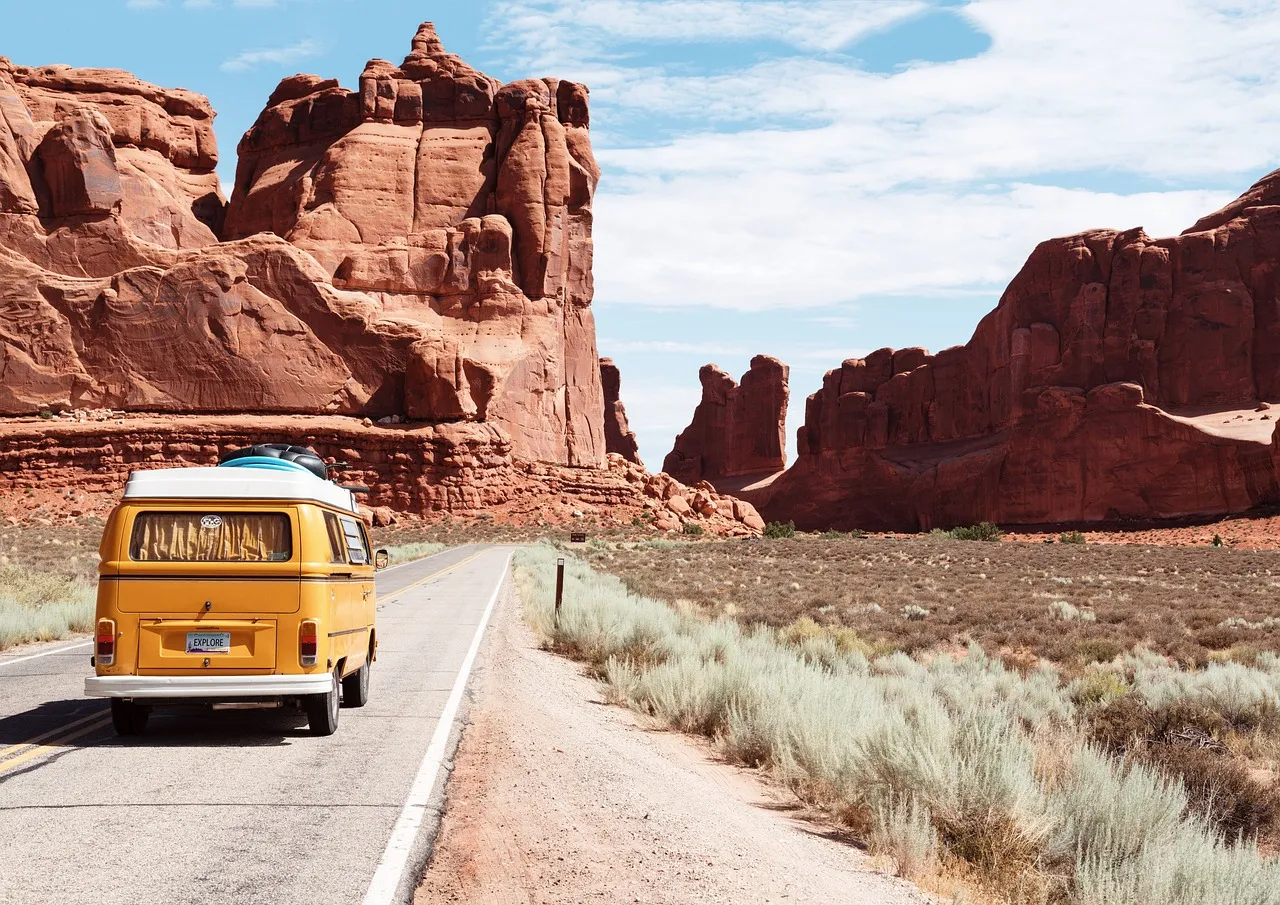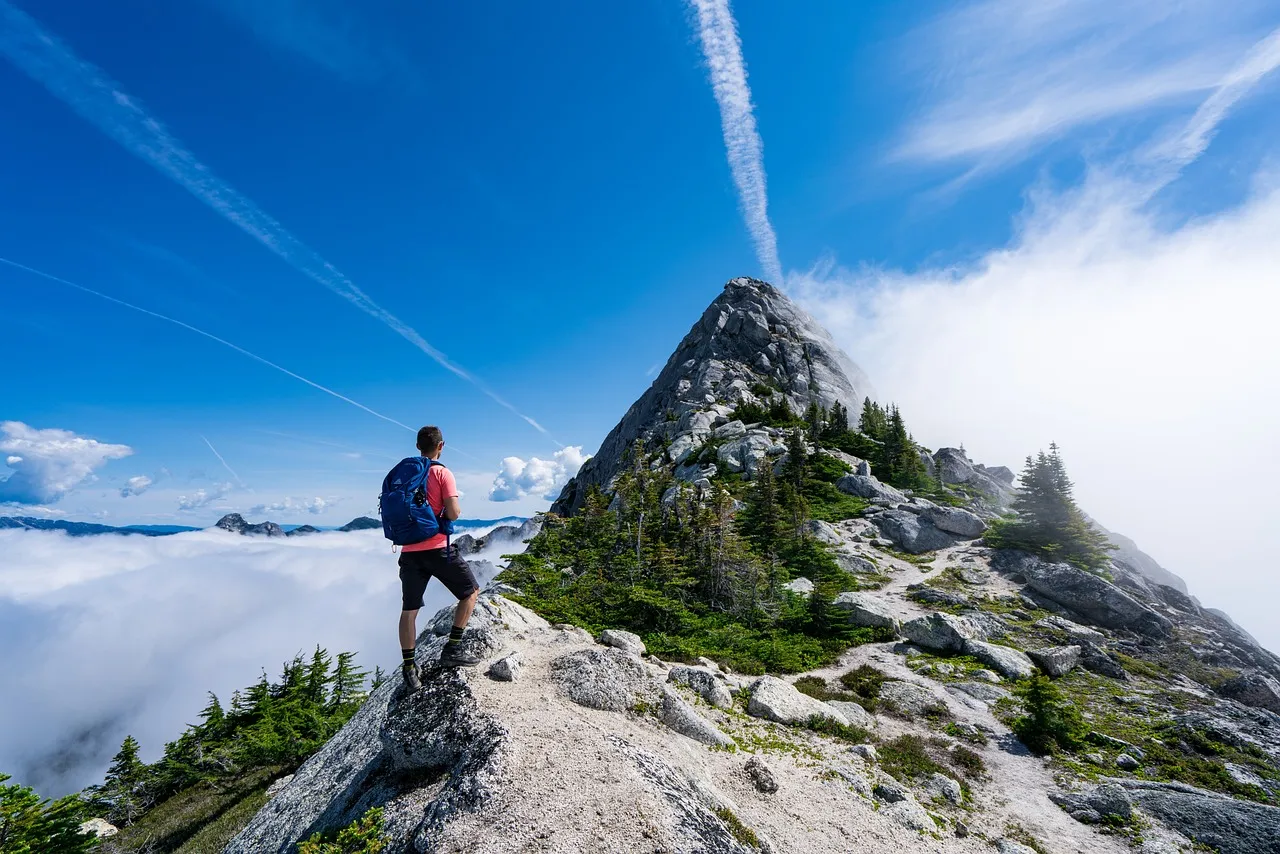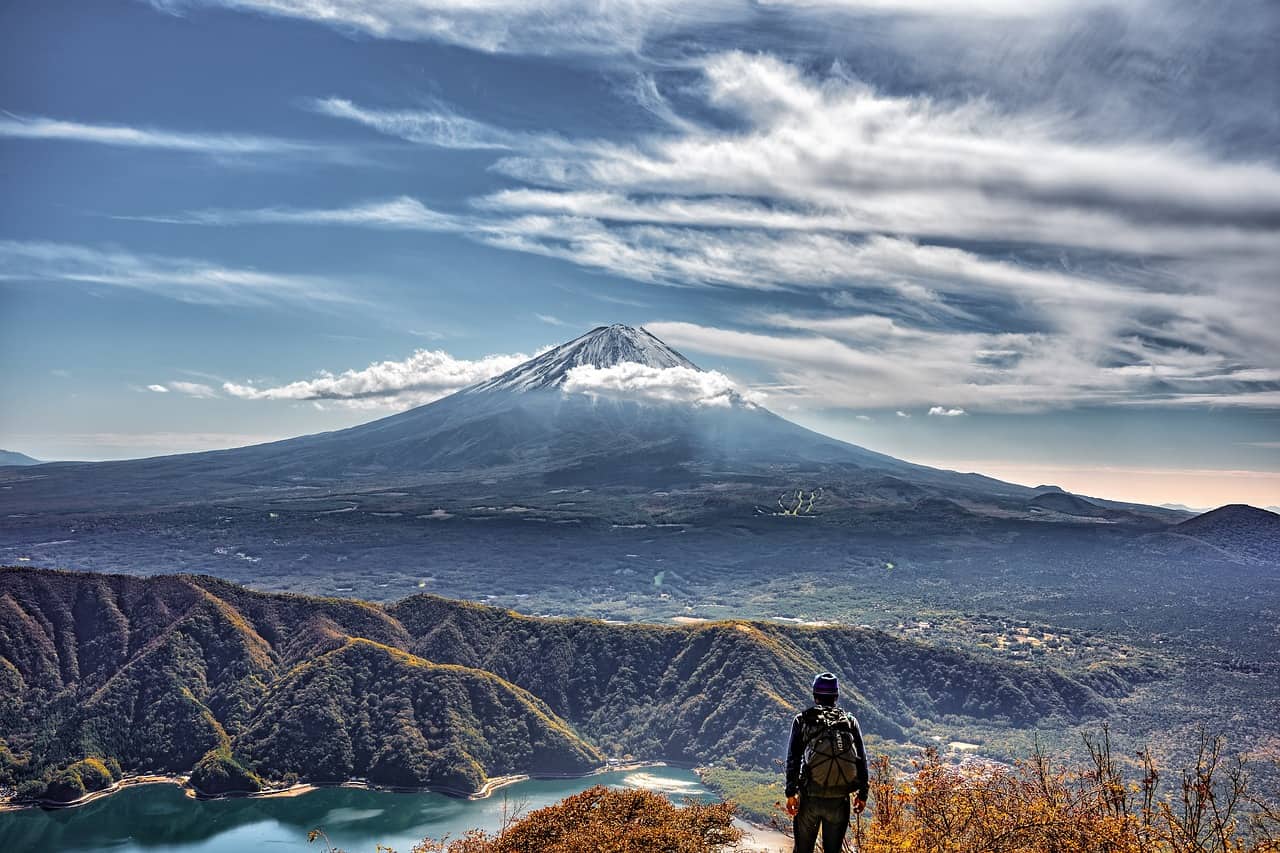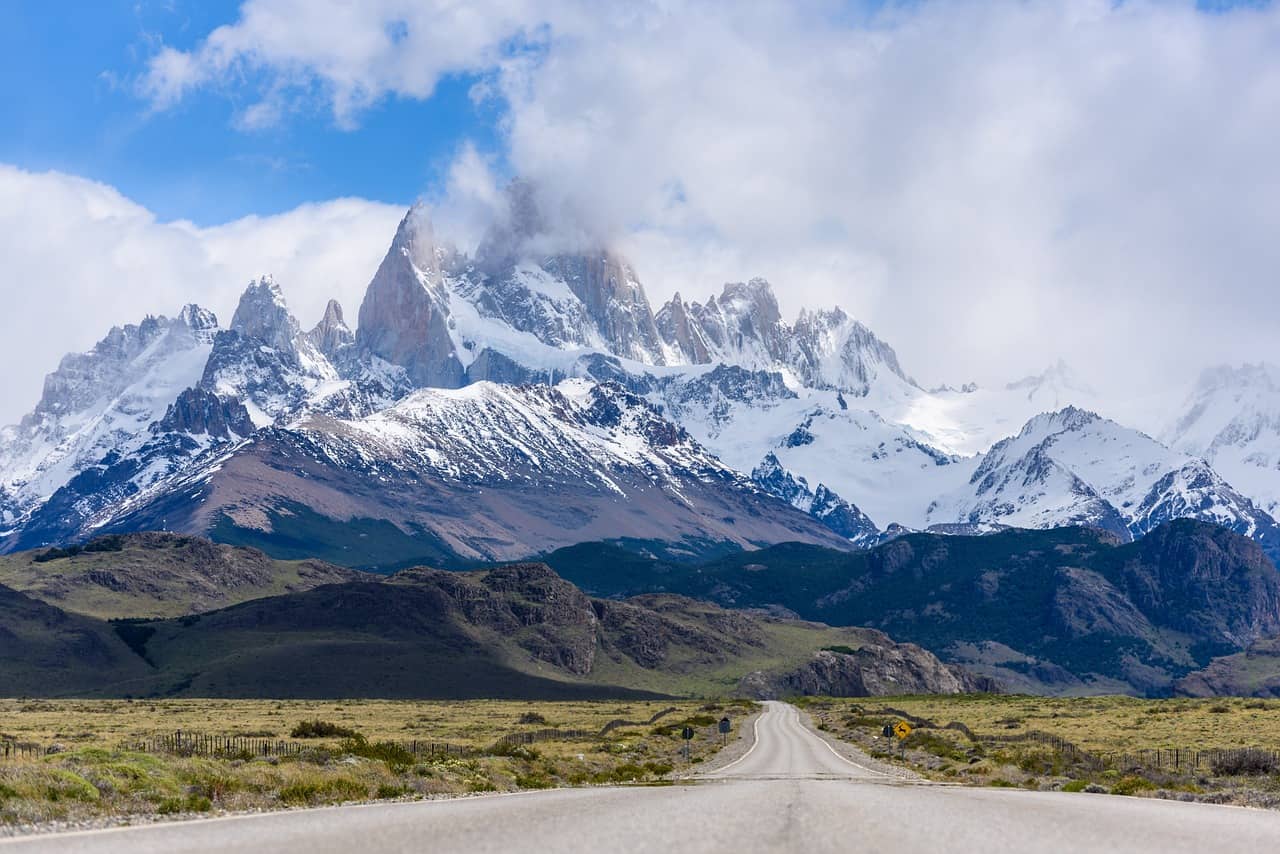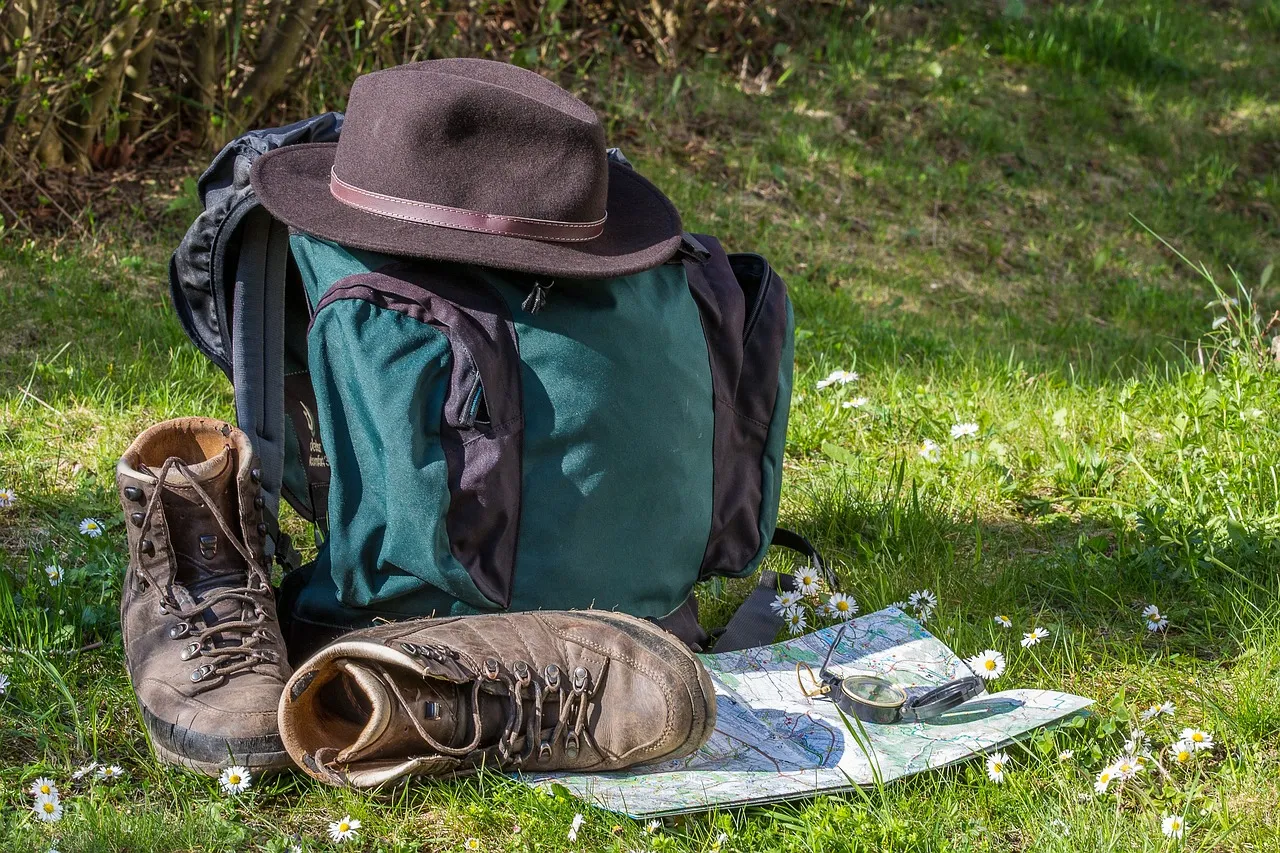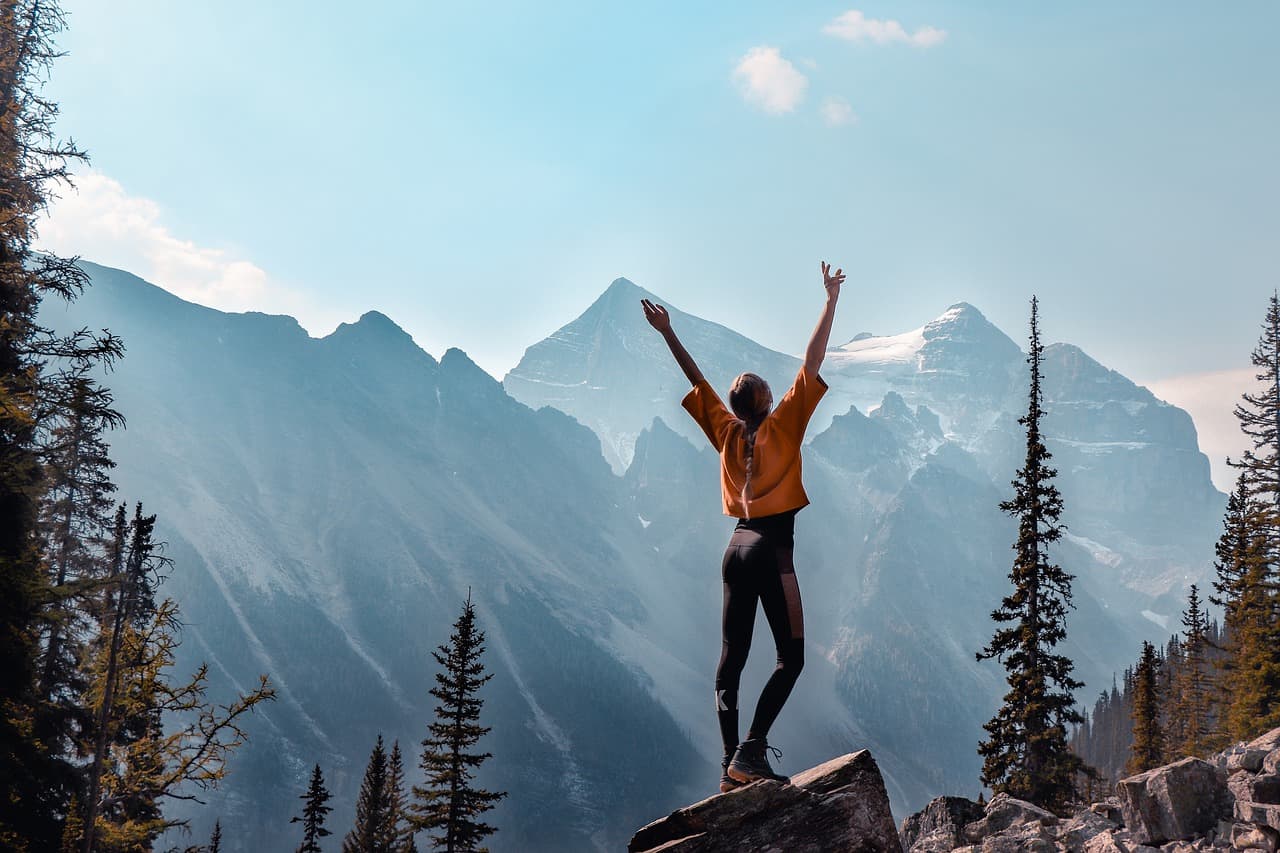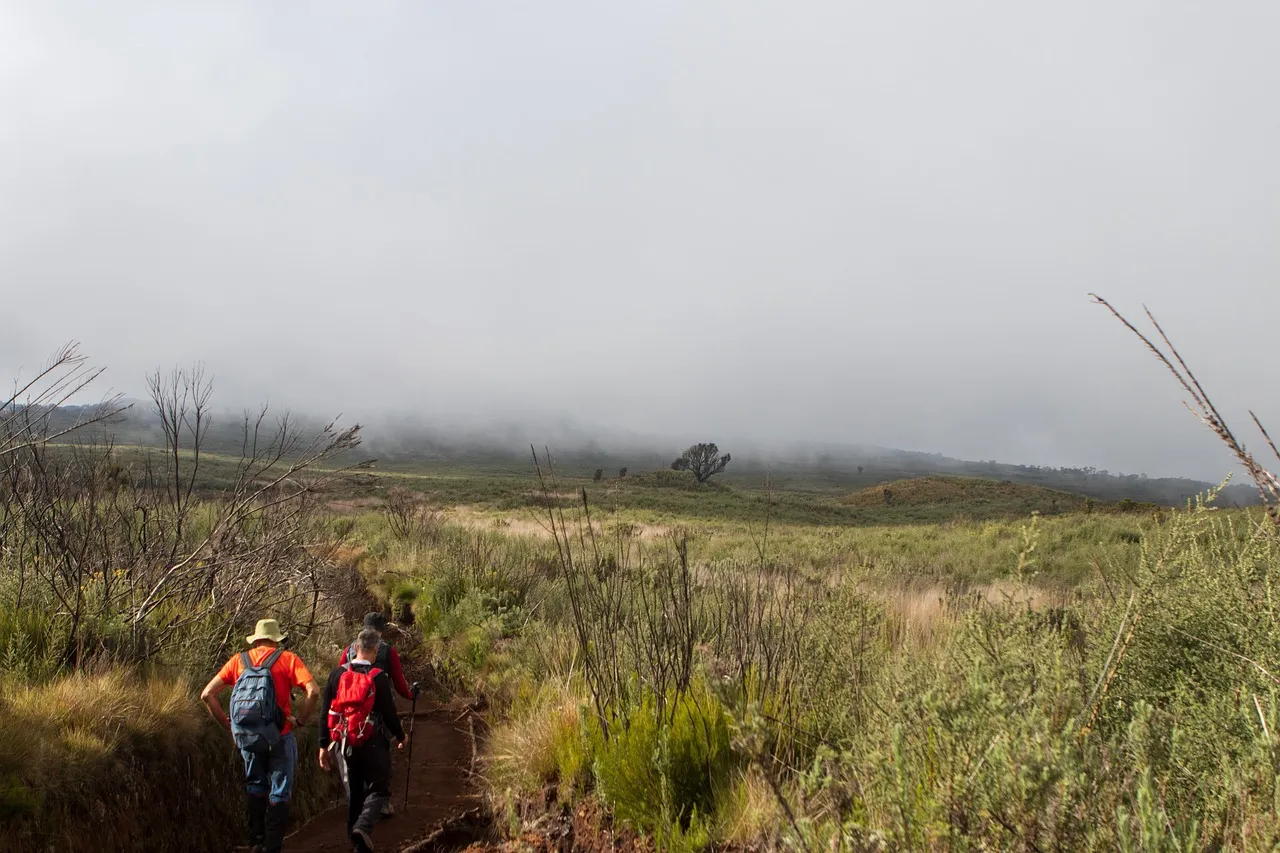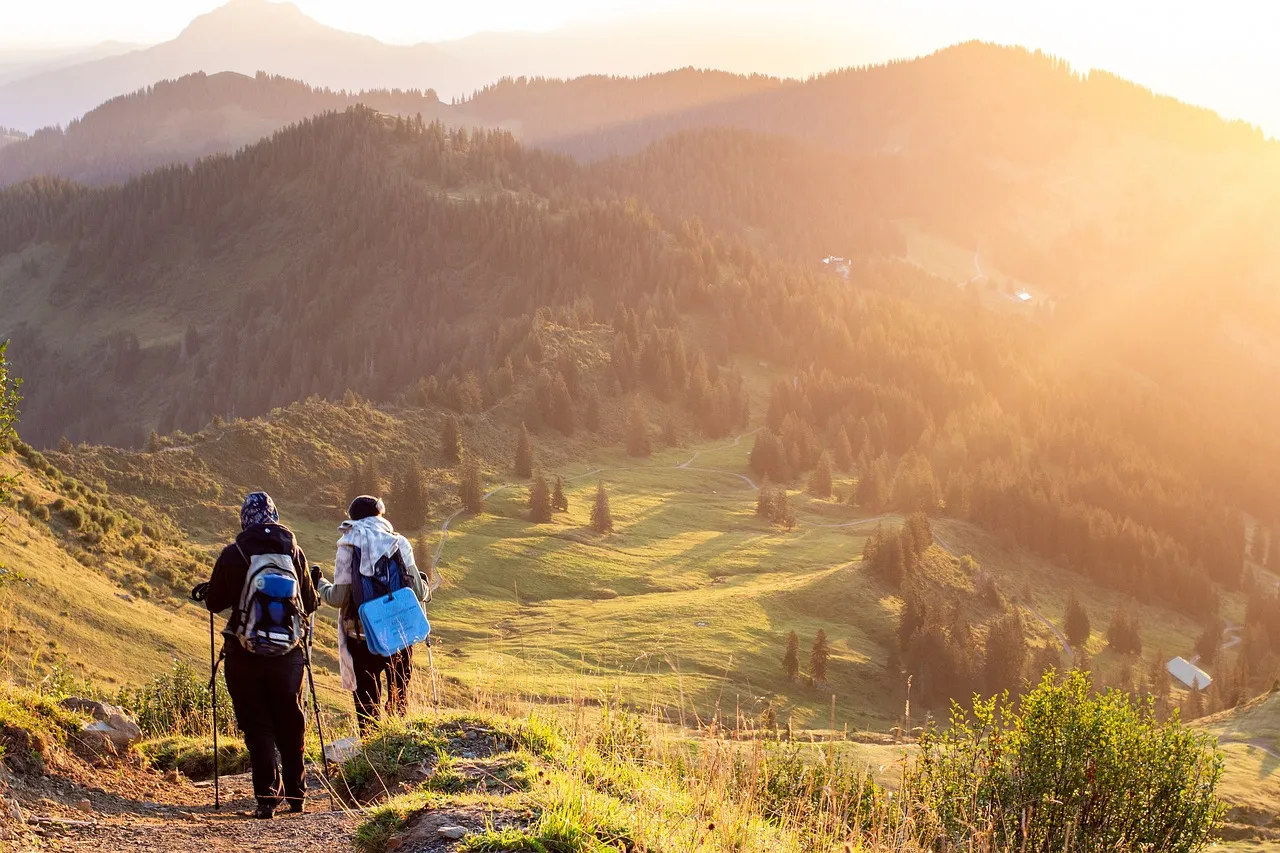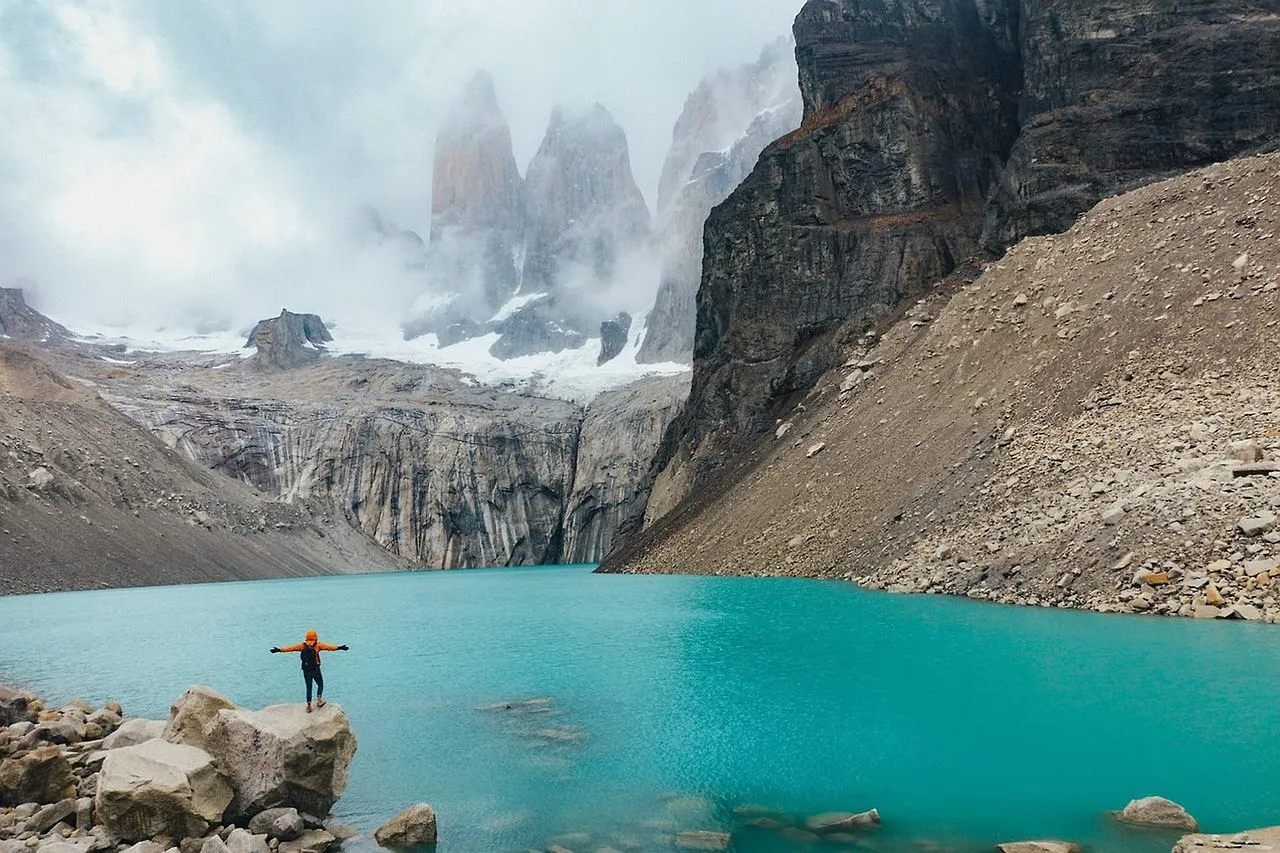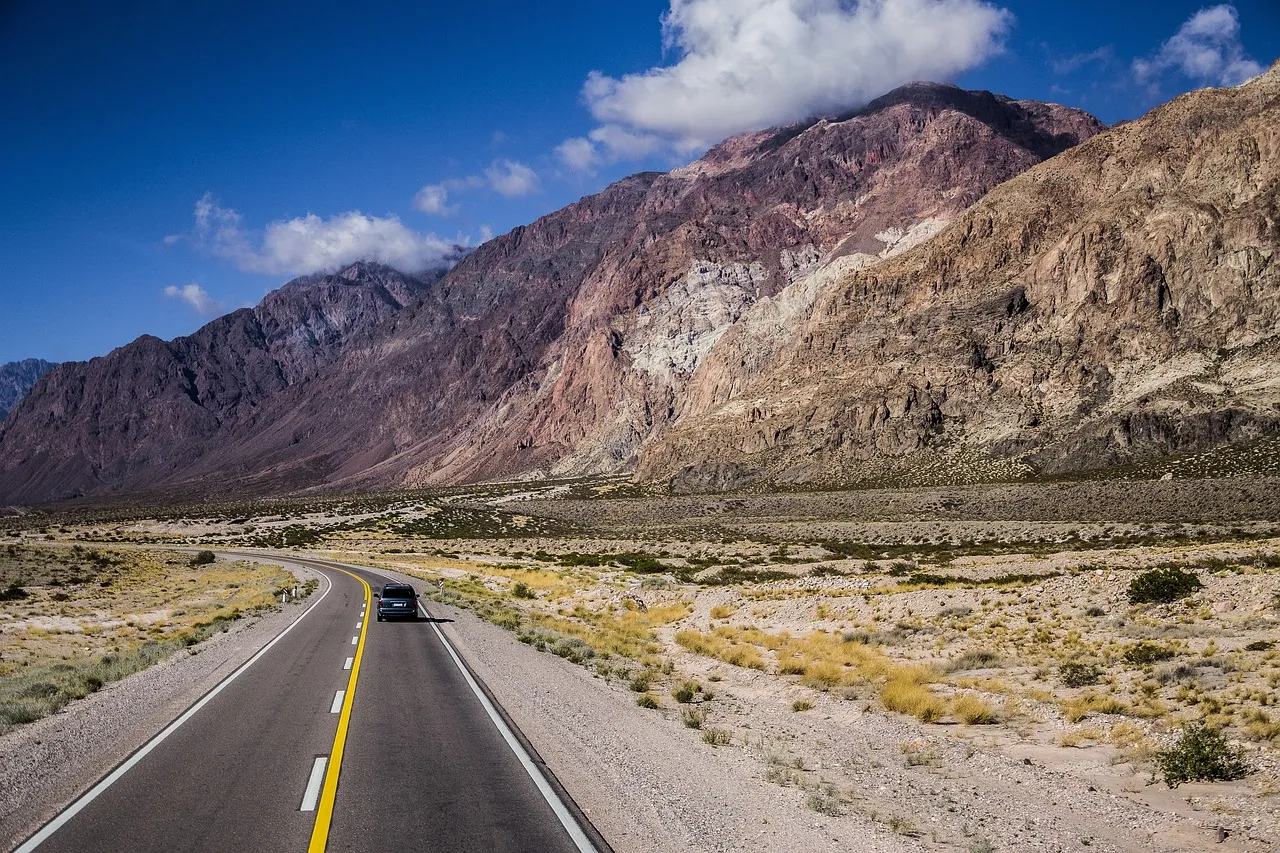Embarking on a journey into the heart of mountains is like entering a realm where time slows, and the hustle of everyday life fades into the background. In this introduction, I invite you to join me on a virtual exploration of the captivating allure of mountain trips—a symphony of towering peaks, serene landscapes, and a rejuvenating connection with nature. As I write this, memories of my own mountain adventures come flooding back, each experience a testament to the transformative power of these majestic landscapes.
I. Tips for planning a mountain trip
Mountains have an inherent mystique, drawing travelers with promises of breathtaking vistas, crisp alpine air, and a sense of solitude that nurtures the soul. From the snow-capped majesty of the Himalayas to the rugged charm of the Rockies, each mountain range carries a unique story waiting to be discovered. Whether you seek the thrill of conquering peaks or the solace of quiet trails, mountain trips offer a diverse tapestry of experiences that cater to every adventurer’s soul.
Yet, amidst the allure of majestic mountain escapes, lies the crucial aspect of planning. A successful and enjoyable mountain experience hinges on thoughtful preparation. From choosing the right trails and understanding weather patterns to ensuring you have the appropriate gear, planning lays the foundation for a seamless journey. My own experiences have taught me that a well-thought-out itinerary not only enhances safety but also allows for a deeper appreciation of the natural wonders that mountains unveil.
In the upcoming segments of this blog series, we’ll delve into the specifics of various mountain retreats, each with its own charm and unique offerings. So, fasten your seatbelts (or hiking boots) and get ready for a vicarious adventure into the world of mountains—a journey that promises not just physical exploration but a rejuvenating communion with nature.
II. Destination Selection: Crafting Your Mountain Adventure
Selecting the perfect mountain destination is akin to choosing a canvas for your masterpiece – each peak, each trail holds the potential for a unique and unforgettable experience. As I guide you through this phase, I can’t help but recall the anticipation that preceded my own mountain escapades, the excitement of exploring terrains where every step feels like a discovery.
A. Researching Potential Mountain Destinations
The first crucial step in crafting your mountain adventure is diligent research. Consider your personal preferences and fitness levels as guiding beacons. Are you drawn to the challenge of steep ascents or the tranquility of gentle slopes? Do you seek the solitude of remote trails or the camaraderie of popular routes? Reflecting on these aspects will help tailor your destination to align with your aspirations. My own forays into the mountains have been shaped by this personalization, each choice reflecting my desire for a balance between challenge and serenity.
- Consideration of Personal Preferences and Fitness Levels
Understanding your own preferences and physical capabilities is paramount. Mountains offer an array of experiences, from leisurely strolls through alpine meadows to rigorous climbs that test your endurance. Researching trails and destinations that align with your comfort level ensures an adventure that is both enjoyable and personally rewarding. In my own experiences, I’ve found that a thoughtful balance between challenge and comfort leads to the most fulfilling journeys.
- Checking Weather Conditions and Seasons
The heartbeat of any mountain journey is dictated by weather conditions and seasonal nuances. Before finalizing your destination, delve into the intricacies of weather patterns. Ensure your chosen timeframe aligns with favorable conditions, minimizing the risk of unexpected challenges. My own encounters with the mountains have taught me the importance of adapting to seasonal shifts – from the vibrant bloom of spring to the crisp embrace of winter, each season paints the landscape with its own palette.
As you embark on the exhilarating journey of destination selection, let the allure of the mountains guide your choices. Through meticulous research and an understanding of your own desires, you’ll carve a path that leads to an adventure uniquely tailored to your spirit. Stay tuned for the next segment, where we’ll delve into the specifics of preparing for your mountain retreat. The mountains await, and the choice of your destination is the first exhilarating step towards an unforgettable experience.
III. Setting Goals and Objectives: Charting Your Course in the Mountains
As we venture further into the intricacies of planning a mountain retreat, the importance of setting clear goals and objectives becomes the compass that steers your journey. My own experiences in the mountains have taught me that these goals serve as the guiding stars, shaping the narrative of your adventure and adding a sense of purpose to every step taken amidst towering peaks.
A. Defining the Purpose of the Mountain Trip
At the heart of effective planning lies a fundamental question: What is the purpose of your mountain trip? Is it a quest for self-discovery, an opportunity for physical challenge, or a desire for spiritual rejuvenation amidst nature’s grandeur? Clarifying this purpose becomes the cornerstone upon which you build the structure of your mountain experience. My own excursions have varied in purpose – from seeking solace in the tranquility of alpine meadows to challenging myself with strenuous ascents, each trip began with a distinct purpose.
B. Establishing Specific Goals, such as Hiking a Certain Trail or Reaching a Summit
With the overarching purpose in mind, the next step is to establish specific goals that bring focus to your journey. Whether it’s conquering a particular trail renowned for its scenic beauty or reaching the summit of an iconic peak, these objectives infuse your adventure with a tangible sense of achievement. I recall standing atop a mountain peak, the crisp air and panoramic views serving as rewards for the specific goal I had set. The sense of accomplishment and awe inspired by reaching these milestones is unparalleled.
Setting goals also adds an element of structure to your trip, transforming it from a mere vacation into a purposeful exploration. It’s this deliberate intention that transforms the mountains into more than just a backdrop but a dynamic canvas for personal growth and discovery.
As you contemplate the purpose of your mountain journey and articulate specific goals, remember that the mountains are not just a destination but a partner in your quest. In the upcoming segment, we’ll delve into the essential elements of preparation, ensuring that your goals are not just aspirations but stepping stones towards a memorable and fulfilling mountain experience.
IV. Budgeting and Financial Planning: Navigating the Peaks of Fiscal Wisdom
In the orchestration of a mountain retreat, the overture of financial planning plays a pivotal role, ensuring that your journey into the peaks is not just exhilarating but also financially sound. Drawing from my own expeditions, I’ve come to appreciate that the harmony between careful budgeting and the allure of the mountains is the key to a seamlessly orchestrated adventure.
A. Estimating Overall Trip Costs
Before the first step on the trail, a prudent adventurer must embark on the path of estimating overall trip costs. From the gear that shields you against the mountain’s whims to the sustenance that fuels your ascent, every aspect requires a meticulous financial consideration. My own expeditions have underscored the importance of accounting for both anticipated and unforeseen expenses, creating a financial buffer for the unexpected turns that the mountains may present.
B. Allocating Funds for Accommodation, Transportation, Permits, and Activities
The allocation of funds within your budget is akin to mapping out the topography of your financial landscape. Break down your budget into key components: accommodation, transportation, permits, and activities. Consider the nuances of each category, whether it be the cost of securing a permit to access pristine trails or the budget for a cozy mountain lodge with views that make waking up worthwhile. Drawing from my experiences, this nuanced approach to budgeting ensures that every penny spent contributes to the overall richness of your mountain sojourn.
As you navigate the financial peaks of planning, remember that the value of your mountain adventure extends beyond monetary measures. It is an investment in experiences, memories, and the intangible enrichment that comes from immersing yourself in the grandeur of nature. Stay tuned for the next segment, where we’ll delve into the essentials of gear and preparation, ensuring that your journey is not just financially savvy but also well-equipped for the heights that await.
V. Safety Precautions: Navigating the Peaks with Vigilance
As we ascend further into the intricacies of planning a mountain escape, safety emerges as the compass that ensures our journey is not only thrilling but secure. My own ventures into the mountains have been marked by awe-inspiring vistas and profound encounters with nature, but these experiences are underpinned by a deep respect for the inherent risks that come with exploring the peaks.
A. Understanding the Risks Associated with Mountain Trips
Before lacing up your hiking boots, it’s imperative to embark on a comprehensive understanding of the risks inherent in mountain trips. From sudden weather changes to challenging terrains, the mountains present a dynamic environment that demands our respect. Drawing from my own encounters, acknowledging these risks is not a deterrent but a preparation strategy, allowing you to navigate the mountains with prudence and awareness.
B. Checking and Preparing Necessary Safety Gear
Equipping yourself with the right gear is akin to fortifying your defenses against the unpredictability of mountain landscapes. A well-prepared adventurer checks and prepares their safety gear meticulously. From sturdy hiking boots that provide a firm foothold to weather-appropriate clothing that shields against the elements, the gear you choose becomes your reliable companion on the trail. Reflecting on my own experiences, I’ve found that investing in quality gear is an investment in your safety and comfort.
C. Familiarizing Oneself with Emergency Procedures and Local Resources
Beyond gear, familiarity with emergency procedures and local resources is an indispensable aspect of safety planning. Know the basics of first aid, understand how to navigate using a map and compass, and acquaint yourself with local emergency services. The mountains are a realm where self-sufficiency is an asset, and the ability to respond to unexpected situations with calm and competence is paramount. My own encounters with minor mishaps have reinforced the importance of being not just a visitor to the mountains but a responsible steward of your own safety.
As we navigate the peaks with vigilance, let safety be the steady beat that underscores the melody of your mountain adventure. In the upcoming segment, we’ll delve into the art of crafting a well-rounded itinerary, ensuring that every step in the mountains is not just exhilarating but also secure.
VI. Physical Preparation: Conditioning Your Body for Mountain Majesty
In the orchestration of a mountain journey, your physical readiness becomes the rhythm that propels you through the undulating landscapes. My own sojourns into the peaks have unveiled the importance of not only savoring the vistas but also preparing one’s body for the demands of elevated terrains and challenging trails.
A. Assessing Personal Fitness Levels
Before setting foot on the trail, it’s paramount to take stock of your personal fitness levels. Mountains, with their ascents and descents, demand a certain level of physical endurance. Assessing your fitness becomes the compass that guides your training plan. Drawing from my own experiences, an honest evaluation of your strengths and areas for improvement lays the foundation for a tailored preparation strategy.
B. Developing a Training Plan to Enhance Physical Endurance
Once your baseline fitness is assessed, the next step is to craft a training plan that enhances your physical endurance. Whether it’s cardiovascular exercises to elevate your stamina or strength training to fortify your muscles, the aim is to cultivate a body that is resilient to the challenges of mountainous terrain. In my preparations, I’ve discovered that consistency is key – a gradual and steady progression in training ensures that your body is not just prepared for the journey but relishes the experience.
C. Acquiring the Necessary Gear and Equipment
Just as a musician needs the right instrument, a mountain adventurer requires the appropriate gear and equipment. From reliable hiking boots that cradle your feet on rocky trails to a backpack that carries your essentials with ease, the gear you choose is an extension of your readiness. Reflecting on my own journeys, I’ve learned that investing in quality gear is an investment in the comfort and safety of your mountain experience.
As you embark on the physical preparation for your mountain adventure, let the anticipation of the peaks motivate your training endeavors. In the next segment, we’ll delve into the art of crafting an itinerary that maximizes your time in the mountains, ensuring a harmonious blend of challenge and reward.
VII. Accommodation and Transportation: Crafting Your Mountain Haven
As we continue our journey through the layers of mountain trip planning, the facets of accommodation and transportation unfold as the pillars that support your alpine escapade. In my own ventures into the peaks, the choices made in these realms have not only framed my retreat but have become the canvas upon which memories are painted – each lodge and trailhead a unique stroke in the masterpiece of my mountain experiences.
A. Researching and Booking Suitable Lodging Options
The selection of your mountain abode is a crucial chapter in the narrative of your adventure. Meticulously researching and booking suitable lodging options ensures that your retreat is not just a respite but an integral part of the mountain charm. From cozy cabins nestled in the Adirondacks to traditional ryokans with soothing onsens in the Japanese Alps, my own choices have transformed the accommodation into a haven, a sanctuary to rest and rejuvenate after a day of mountain exploration.
B. Planning Transportation to and Within the Destination
The journey to the mountains is an odyssey in itself, and careful planning of transportation is the compass that guides you to the heart of your chosen range. Whether it’s the winding roads leading to the Rockies or the efficient train systems threading through the Swiss Alps, each mode of transportation adds its own flavor to the overall experience. Reflecting on my own expeditions, the anticipation of the mountain journey begins with the first step onto a train, plane, or car that leads me closer to the peaks.
As you weave through the options of accommodation and transportation, let the choices resonate with the melody of your mountain aspirations. The next segment will unravel the art of crafting a well-rounded itinerary, ensuring that your days in the mountains are not just filled with adventure but also with the harmony of thoughtful planning.
VIII. Environmental Considerations: Treading Lightly in Nature’s Sanctuary
In the orchestration of a mountain retreat, the melody of environmental consciousness harmonizes with every footfall, reminding us that the peaks we explore are not just destinations but delicate ecosystems deserving of our utmost respect. My own journeys into the mountains have been shaped by an appreciation for the pristine beauty of nature and an unwavering commitment to leave no trace.
A. Understanding Leave No Trace Principles
The mountains are not just a backdrop for our adventures but a sanctuary teeming with life and interconnected ecosystems. Understanding and practicing Leave No Trace principles becomes the compass guiding our ethical navigation through these landscapes. From minimizing campfire impact to disposing of waste responsibly, adhering to these principles ensures that the untouched beauty of the mountains endures for generations to come. My own commitment to Leave No Trace has been a conscious effort to preserve the sanctity of the places I’ve been fortunate enough to explore.
B. Minimizing Environmental Impact and Respecting Wildlife
As we tread the trails, it’s crucial to minimize our environmental impact and coexist harmoniously with the wildlife that calls the mountains home. Staying on designated paths, avoiding the disturbance of wildlife, and refraining from littering are essential components of responsible mountain exploration. Reflecting on my own encounters, the sight of a majestic eagle soaring overhead or a timid deer grazing in the distance is a reminder that these mountains are not just ours to conquer but shared spaces with myriad creatures.
In the next segment, we’ll delve into the art of crafting an itinerary that maximizes your time in the mountains, ensuring that your journey is not just a personal odyssey but also a responsible and sustainable venture. The mountains are not just landscapes to traverse but sanctuaries to cherish, and our actions as explorers play a crucial role in preserving their enduring allure.
IX. Itinerary Planning: Mapping Your Mountain Odyssey
In the grand tapestry of a mountain adventure, the art of itinerary planning emerges as the compass that guides your days amidst towering peaks. My own escapades into the mountains have been shaped by the delicate dance of meticulous planning and the embrace of spontaneity, each day unfolding as a new chapter in the story of exploration.
A. Creating a Detailed Day-to-Day Itinerary
Crafting a detailed day-to-day itinerary is akin to sketching the contours of your mountain odyssey. From sunrise hikes that unveil panoramic vistas to leisurely afternoons by alpine lakes, each day deserves thoughtful consideration. My own itineraries have been a blend of carefully curated trails, cultural explorations, and moments of quiet reflection. Researching the must-see sights and understanding the pacing that aligns with your preferences ensures that every moment in the mountains is a well-spent one.
B. Allowing Flexibility for Unexpected Changes or Delays
Yet, in the ever-shifting landscapes of the mountains, the unexpected is an inevitable companion. Allowing flexibility in your itinerary becomes the safety net that transforms unforeseen changes or delays into opportunities for new discoveries. My own encounters with weather surprises and impromptu wildlife sightings have reinforced the importance of embracing the ebb and flow of mountain time. Flexibility is not just a logistical consideration but a mindset that enriches your journey with the unexpected.
As you map your mountain odyssey, let the itinerary be a guide rather than a rigid script. The next segment will unravel the nuances of gear preparation, ensuring that you are equipped not just for the planned trails but also for the serendipitous paths that beckon in the mountains. The peaks await, and your itinerary is the compass that leads you to their majestic embrace.
X. Packing Essentials: The Art of Crafting Your Mountain Arsenal
In the symphony of preparing for a mountain retreat, the overture of packing essentials is the crescendo that precedes your ascent into the peaks. Drawing from my own experiences, I’ve come to appreciate that a well-packed bag is not just a collection of items but a carefully curated arsenal that ensures you are not just a visitor to the mountains but a prepared and self-sufficient explorer.
A. Compiling a Comprehensive Packing List
The first act in the drama of packing is compiling a comprehensive list of essentials. From the obvious, like sturdy hiking boots and weather-appropriate clothing, to the often overlooked, such as a compact first aid kit and a reliable headlamp, each item plays a crucial role in your mountain repertoire. My own packing lists have evolved with each expedition, a testament to the refinement that comes with experience. Researching the specific needs of your chosen destination ensures that no essential is left behind.
B. Tips for Packing Efficiently and Minimizing Unnecessary Items
As the packing list takes shape, the next act is the art of packing efficiently and minimizing unnecessary items. In the mountains, every ounce matters, and a well-organized backpack is a boon on the trail. Consider dual-purpose items, like a multipurpose tool or clothing layers that serve both warmth and ventilation. My own lessons in efficient packing have taught me the value of simplicity – each item earning its place through practicality and necessity. Resist the temptation to overpack, and let your bag be a reflection of thoughtful consideration rather than a burden on your journey.
As we delve into the intricacies of gear preparation, remember that your packed bag is not just a logistical necessity but a partner in your mountain adventure. The next segment will guide you through the final steps of readiness, ensuring that your journey is not just anticipated but well-equipped for the challenges and wonders that await in the towering embrace of the peaks.
XI. Communication Plan: Bridging the Wilderness with Connectivity
As we navigate the valleys and summits of our mountain adventures, the oft-overlooked but crucial component of a communication plan emerges as the thread that connects us with the outside world. Drawing inspiration from my own journeys into the heart of the mountains, I’ve come to understand that in the solitude of the peaks, a well-thought-out communication plan is not just a precautionary measure but a lifeline that links us with the familiar, even as we embrace the unknown.
A. Ensuring Communication Devices are in Working Order
The first stride in establishing a reliable communication plan is ensuring that your devices are in working order. From satellite phones that defy the remoteness of the peaks to basic walkie-talkies that bridge the gaps in cellular coverage, the choice of communication tools becomes the conduit that transcends the isolation of mountainous terrains. My own experiences have underscored the importance of this preparatory step, transforming communication devices from mere gadgets into indispensable companions.
B. Sharing Trip Details with a Trusted Contact and Establishing Check-In Points
Equally important is the act of sharing trip details with a trusted contact and establishing regular check-in points. This safety net not only provides peace of mind to loved ones back home but is a contingency plan that ensures someone is aware of your whereabouts. My own commitment to this practice has offered reassurance to family and friends, creating a sense of connection even when surrounded by the solitude of the mountains. Establishing check-in points, whether daily or at key milestones, becomes the virtual presence that bridges the geographic gap.
As you embark on your mountain odyssey, let the communication plan be the invisible tether that ties you to both the wilderness and the familiarity of those you hold dear. The next segment will guide you through the final steps of readiness, ensuring that your journey is not just anticipated but well-equipped and connected, ensuring a seamless dialogue between the ethereal heights and the grounded support of those who await your return.
XII. Conclusion: Crafting the Summit of Success
As we reach the final crescendo of this mountain journey, the echoes of preparation and anticipation reverberate in the valleys and peaks that we’ve explored together. Emphasizing the paramount importance of thorough planning becomes the epilogue that encapsulates the essence of a successful mountain trip. Drawing from my own expeditions, I’ve come to understand that the mountains, with their timeless allure, demand not just awe but a deep respect that manifests through meticulous preparation.
Thorough planning is the silent architect that shapes the narrative of your mountain adventure. From the initial spark of inspiration to the summit’s triumphant embrace, every step is underpinned by the foundations laid during the planning phase. Whether it’s the careful consideration of safety measures, the crafting of a well-rounded itinerary, or the packing of essentials that transform challenges into triumphs, each element is a brushstroke in the masterpiece of a successful mountain trip. My own reflections on the importance of planning have evolved with each expedition, a testament to the ongoing learning process that defines the art of exploring the peaks responsibly.
As the journey concludes, the call is not just to embark on an adventure but to embrace it responsibly and safely. The mountains, with their sublime beauty and formidable challenges, beckon us to be not just adventurers but stewards of these natural wonders. Encouraging readers to tread lightly, minimize environmental impact, and prioritize safety is not just a suggestion but a responsibility we bear as custodians of the mountains. My own experiences have been marked not just by personal fulfillment but by a profound sense of responsibility to the landscapes that have generously hosted my exploration.
As you contemplate your own mountain odyssey, may these insights serve as waypoints, guiding you through the valleys and peaks with wisdom and reverence. The mountains await, and in the dance between meticulous planning and spontaneous discovery, may your journey be not just an adventure but a transformative communion with nature’s grandeur.
